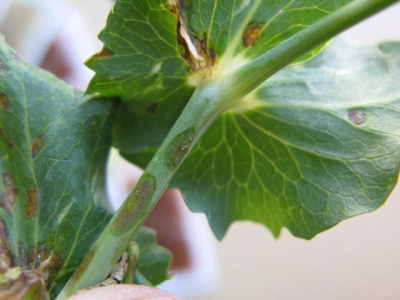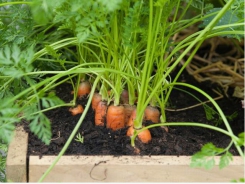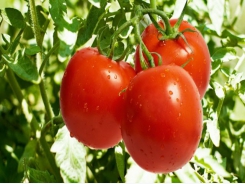Plant Diseases – Understanding the Problem

Plant Diseases
Disease symptoms are caused by fungi, bacteria and viruses. They are parasitic organisms, that is to say, ones that take their food from other living creatures. They are mainly microscopic (invisible to the naked eye). They tend to be known by the symptoms they produce, such as “white rot” or “downy mildew”, rather than by the name of the causal organism.
Fungal disease
The majority of plant diseases are caused by fungi (though the majority of fungi do not cause diseases). Fungi consist mainly of microscopic threads, invisible to the naked eye, that grow through plant tissue. We only notice the more conspicuous reproductive structures such as toadstools and bracket fungi of some species.
Fungi are plants, but they do not contain chlorophyll — the pigment that allows green plants to make their food. This is why they must take food from other plants, living or dead.
Plant hosts
Similar disease symptoms such as rust, grey mould and powdery mildew may be found on a variety of plants, which leads to the common belief that a disease on one type of plant will rapidly spread to others. This is not always so. Some diseases like grey mould can behave in this way; in many cases (with powdery mildews and rusts, for example), the similar symptoms are caused by different species of fungi on different plants and they do not cross-infect.
Spread and survival
Fungi spread from plant to plant mainly in the form of spores, which grow to form new fungi. Spores can be spread by wind, rain or contaminated soil. Some fungi (honey fungus, for instance) will grow through the soil to find another suitable host.
The majority of disease-causing fungi can live on both dead and living plants, so dead plant material can act as a source of further infection. A few, including rusts and powdery mildews, can survive only in living plants.
Fungi can survive the winter in live plants (which do not always exhibit symptoms), in crop debris and as spores or “overwintering bodies” in the soil. In the absence of a suitable host plant, some, including club root and white rot,
produce very tough resting bodies which can survive in the soil for 20 years or more. This makes them particularly problematic to control.
Disease symptoms
The effects of fungal diseases are many, ranging from mild to life-threatening. Some are localized, damaging a restricted area, while others are systemic, meaning they spread throughout the plant.
Typical symptoms include death of plant tissue (spots); abnormal increase in tissue (cankers, scabs); change in colour such as silvering or yellowing (silver leaf); wilting (wilts, foot rots); wet rots (damping off); powdery and fluffy moulds (mildews, grey mould).
Bacterial diseases
Bacteria are tiny, simple organisms. They cause few diseases but those they do cause are important and/or difficult to control. Some of the most common symptoms include soft rots, leaf spots, cankers and galls.
Bacteria are spread in soil water, in and on planting material, and by wind and rain. They are unable to break through a plant’s “skin”, so their main point of entry is through a wound caused by another organism or by mechanical damage such as pruning.
Virus diseases
Viruses are even smaller than bacteria, only a few hundred thousandths of a centimetre long. They can only multiply within other plant cells. However, despite these limitations, viruses are responsible for some of the worst plant diseases and, unfortunately, once a plant is infected the virus moves throughout the plant and nothing can cure it.
• Plants affected
Viruses are named after the plant that they were initially, or are most commonly, found in. This can lead to confusion as the virus is not necessarily restricted to this type of plant; the cucumber mosaic virus, for example, can be found in over 400 different species of plant. However, not all viruses are so adaptable.
• Spread and survival
Because they are so small, viruses rely on other creatures for their spread. The majority are moved from plant to plant by aphids and eelworm. Cuttings taken from infected plants will also be infected.
A few viruses are distributed in pollen and seed, while others rely on humans. We can transfer some viruses (tobacco mosaic virus in particular) on hands and secateurs.
We also bring viruses into the garden in infected plants, which may not show obvious symptoms. This is the reason why it is advisable to buy plants and planting material such as potato tubers that are certified virus-free.
• Symptoms and identification
Viruses are almost impossible for the amateur to identify precisely. What is important to know is when symptoms are caused by a virus rather than by a disease, pest or deficiency.
Viruses can stunt growth and reduce cropping considerably. Obvious symptoms include mottling, mosaic and other patterns on leaves; growth may also be malformed and flowers streaked.
Some of these symptoms may be confused with mineral deficiencies. A virus is initially likely to appear on one or two plants only, whereas a deficiency is more likely to affect a whole row. Viral symptoms may come and go, especially in hot weather. A cool, dull day is the best time to look for them.
• Virus control
Once a plant is infected with a virus, the virus will spread through it. Unfortunately, there is no cure; the only answer is to try to prevent infection in the first place. Although viruses can attack a wide range of plants, and cause many different symptoms, the methods of prevention are similar for all.
VIRUS CONTROL
• Control the agent which spreads the virus or prevent it from reaching susceptible plants
• Grow virus-resistant cultivars
• Where appropriate, break the cycle by removing all susceptible plants
• Practise crop rotation
• Buy certified virus-free planting material where available, for example fruit, potatoes, bulbs and some ornamentals
• Dig up and burn or dispose of infected plants
• Grow new plants from seed
Có thể bạn quan tâm
Phần mềm

Phối trộn thức ăn chăn nuôi

Pha dung dịch thủy canh

Định mức cho tôm ăn

Phối trộn phân bón NPK

Xác định tỷ lệ tôm sống

Chuyển đổi đơn vị phân bón

Xác định công suất sục khí

Chuyển đổi đơn vị tôm

Tính diện tích nhà kính

Tính thể tích ao hồ




 Improving water usage efficiencies in sugarcane
Improving water usage efficiencies in sugarcane  The farming philosophy of a top maize farmer
The farming philosophy of a top maize farmer